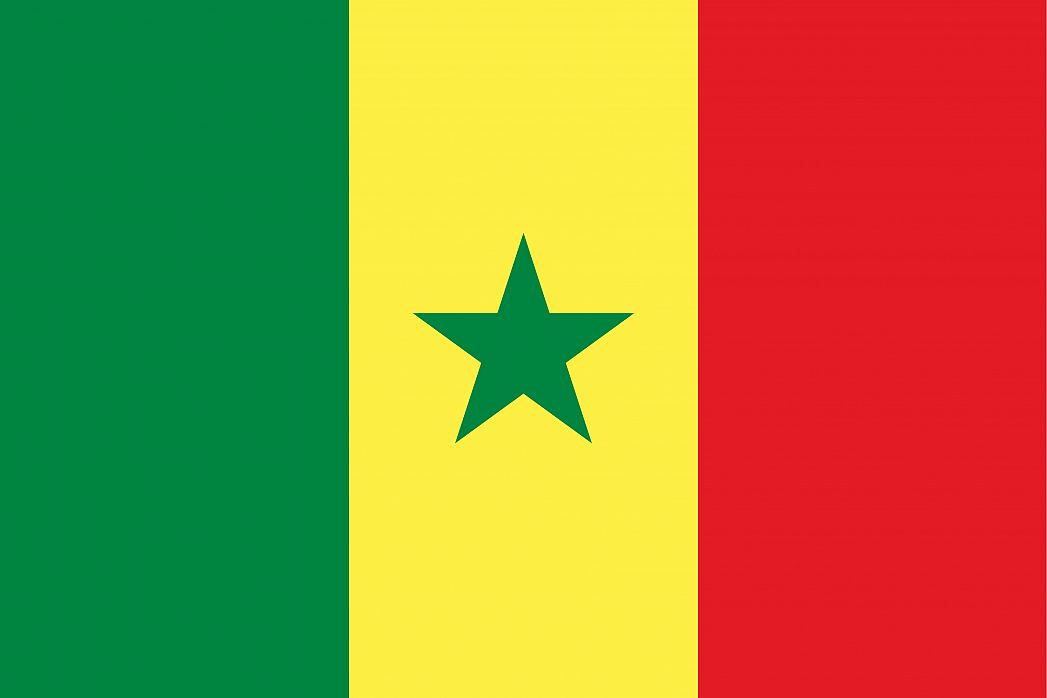The flag of Senegal consists of three horizontal fields (left to right) green, yellow, and red with a green, five-pointed star in the center of the yellow field. After Senegal became independent of France on 4 April 1960, this flag was officially adopted on 20 August of the same year. Historically, the colors were used by the three political parties that formed the Senegalese Progressist Union which ruled the country from 1960-2000.
The colours and symbolism of the flag of Senegal are typical of the Pan-African flags seen in the area that promote nationalism, independence, and a thriving people. The green used in this flag is seen as a symbol of the Prophet for Muslims and a symbol of hope for Christians. Red is said to be a symbol of sacrifice, determination, and the blood of the Senegalese people who fought for the independence of the nation. According to the government of Senegal, the yellow is representative of wealth and the progress of the economy, which will lead to the development of culture and education.
Details on the designer and original design of the flag of Senegal are uncertain and interestingly, the design specifications are not found in any official laws or decrees. What is known is that the colors were chosen by the new government of Senegal as a sign of solidarity with neighbouring countries who had also gained independence. The Pan-African colors are shared by several flags of the region.
While the country was under French colonial rule the flag of France was used which is said to have inspired the current national banner. From 1958-1959, a flag of French Senegal was used which consisted of a green field with a yellow, five-pointed star in the centre. Just before Senegal became a fully independent republic it merged with Sudan in 1959, also under French rule, and formed the Mali Federation.
This page was last modified on May 1st, 2018
More on Graphicmaps

Published on 2019-11-06
What is a Trade Embargo?

Published on 2019-11-04
Which Two Countries Used to Have the Same Flag?

Published on 2019-09-16
What Is the Only Two-Sided State Flag?

Published on 2019-09-16
Which Country Flag Looks Like the Texas Flag?

Published on 2019-08-29
Flags That Resemble the US Flag

Published on 2019-08-20
